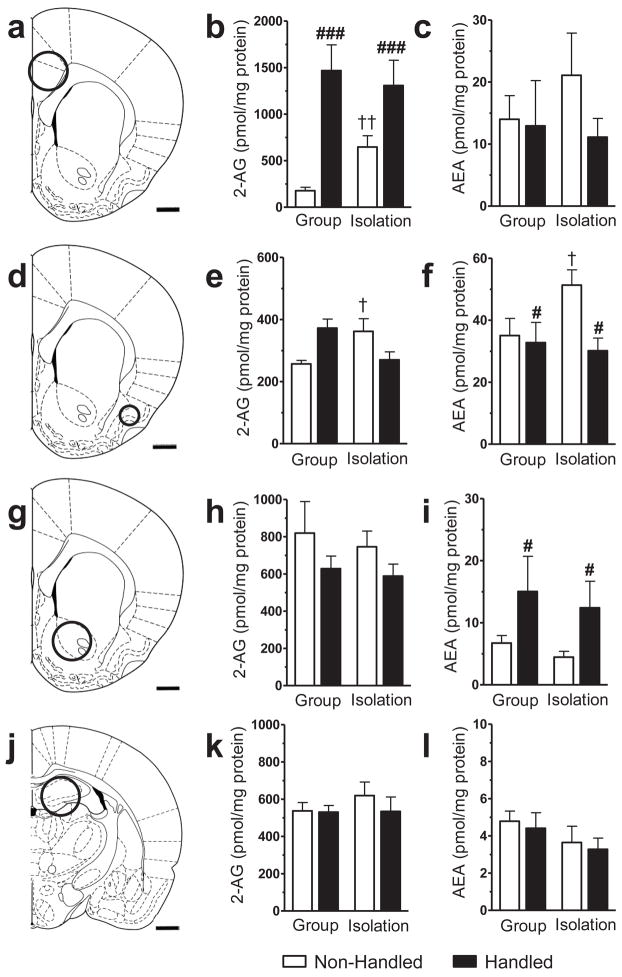Figure 6.
Endocannabinoid content in brain punches derived from adult rats with manipulated rearing and handling histories post-weaning. Single hemisphere punches were obtained at the level of the (a – c) prefrontal cortex, (d – f) piriform cortex, (g – i) nucleus accumbens, and (j – l) hippocampus as outlined (a, d, g, j) and assayed for 2-arachidonoylglycerol (2-AG) and anandamide (AEA). Social isolation modified endocannabinoid content in rats that were non-handled; social isolation increased (b) 2-AG in the prefrontal cortex, without altering (c) AEA levels, and increased both (e) 2-AG and (f) AEA content in the piriform cortex, relative to group rearing. Handling altered endocannabinoid content in both a ligand and brain region specific manner. In the prefrontal cortex, handling selectively increased (b) 2-AG but not (c) AEA levels compared to non-handling. In the piriform cortex, handling decreased (f) AEA, but unaltered (e) 2-AG, relative to non-handling. In the nucleus accumbens, handling increased (i) AEA but not (h) 2-AG compared to non-handling. (k, l) Endocannabinoid content was unchanged in the hippocampus. Data are mean ± S.E.M. ###P < 0.01, #P < 0.05 vs. Non-handled (ANOVA); ††P < 0.01, †P < 0.05 vs. Group Reared/Non-Handled (t-test, two-tailed). Scale bar equals 1 mm.

